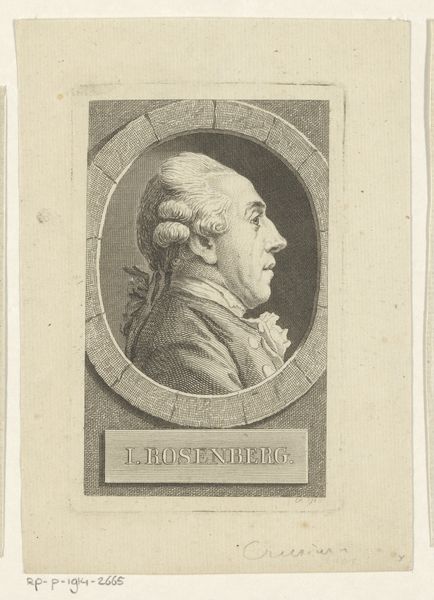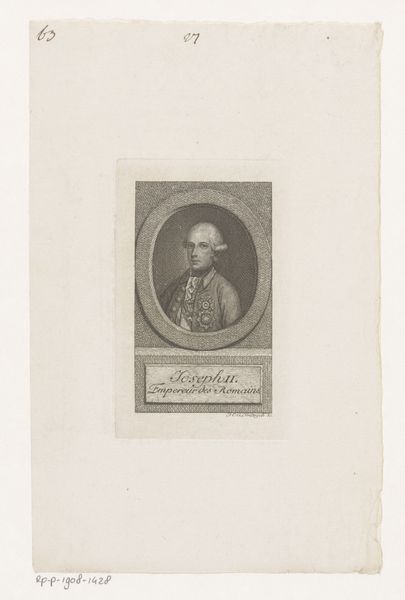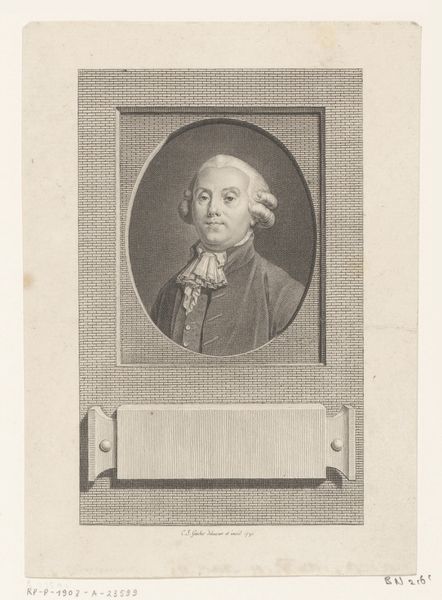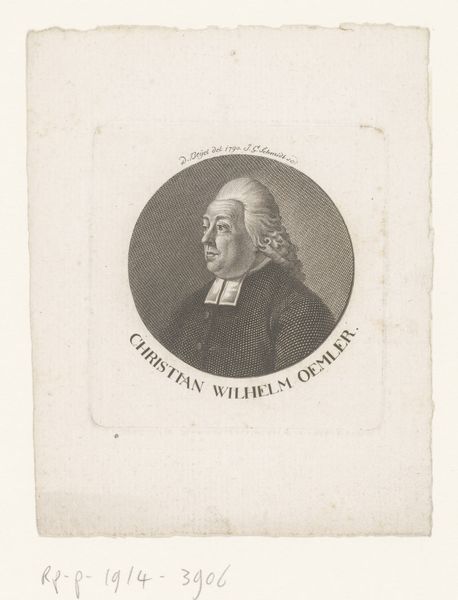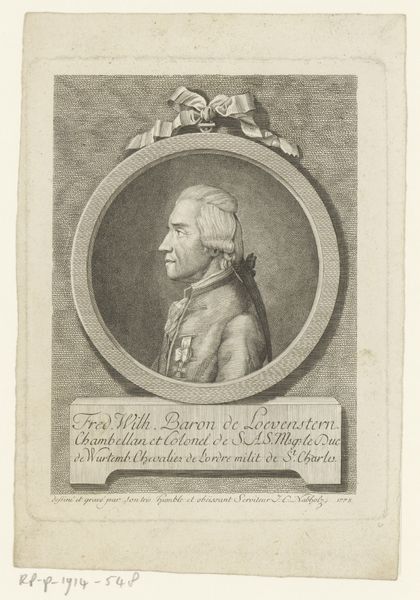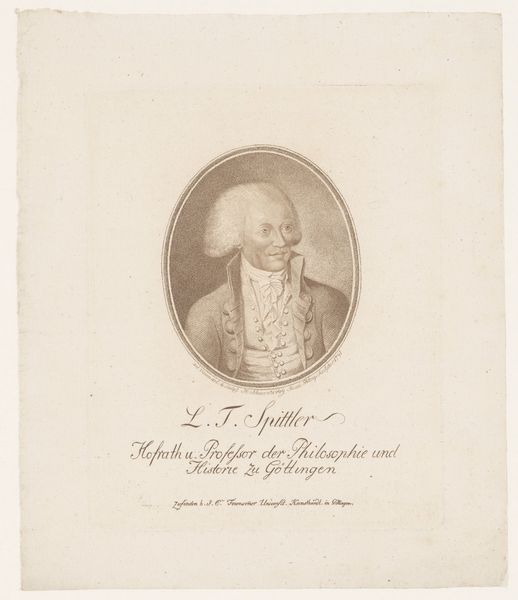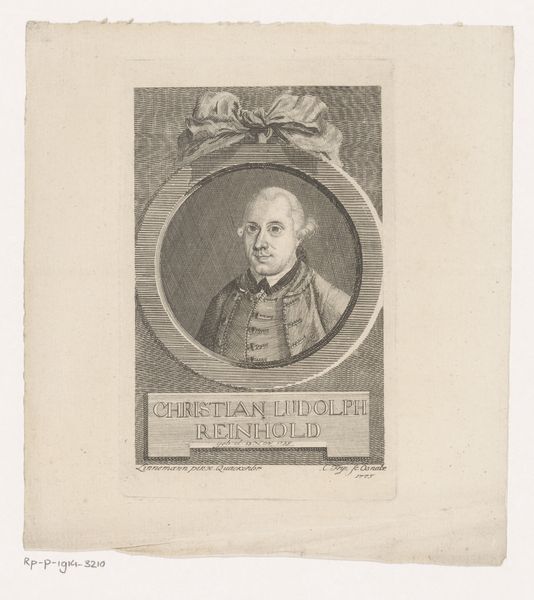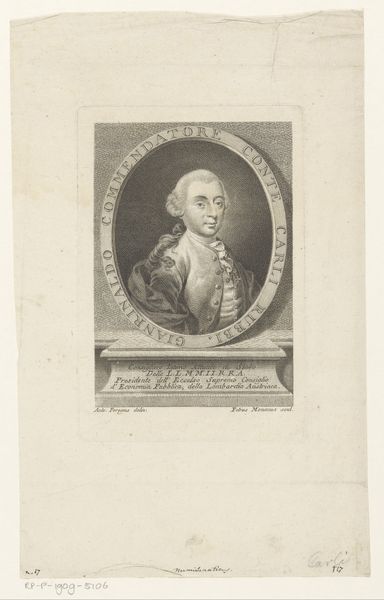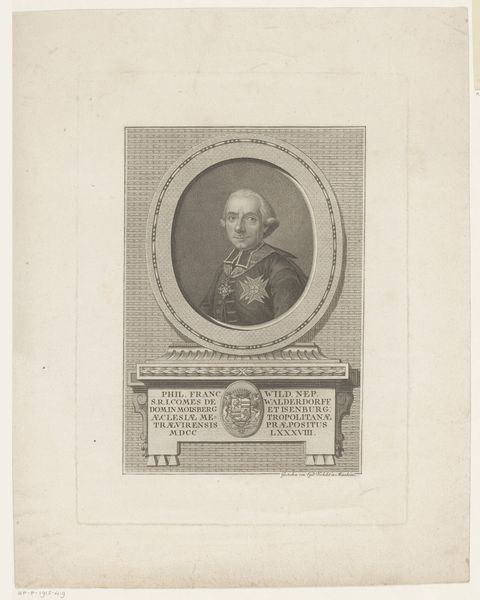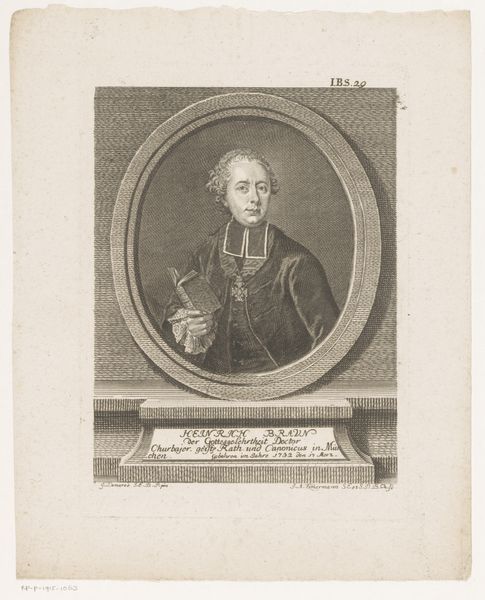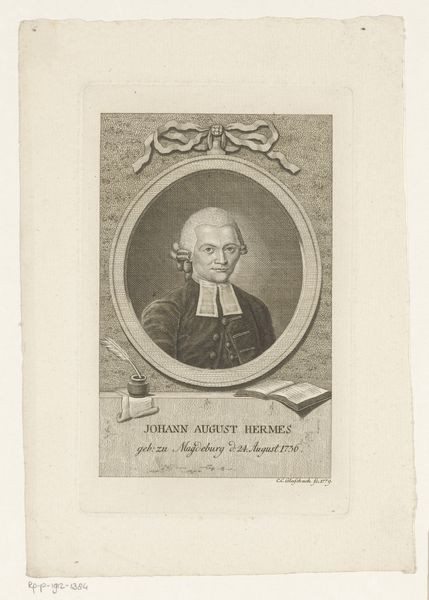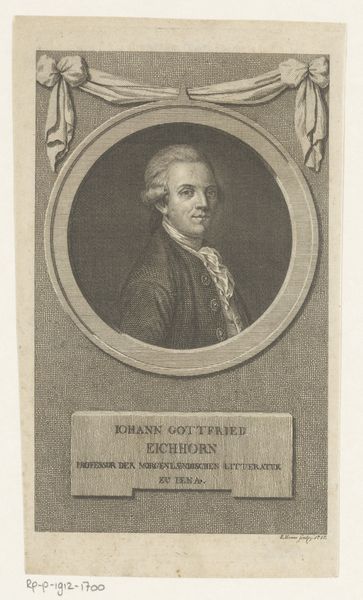
print, engraving
#
portrait
#
neoclacissism
# print
#
old engraving style
#
19th century
#
history-painting
#
engraving
Dimensions: height 243 mm, width 176 mm
Copyright: Rijks Museum: Open Domain
Curator: The somber tones in this print initially give me the feeling of peering into history. Editor: And, indeed we are. This is "Portret van Frederick William Herschel" made sometime between 1776 and 1824. It's currently held in the Rijksmuseum, and its production is attributed to Johann Christian Ernst Müller. Curator: Herschel! Fascinating. Knowing his legacy as an astronomer lends a different weight to the portrait. There's an almost restrained scientific curiosity captured here, a focus on intellectual engagement perhaps. But what a stark aesthetic. Editor: It’s striking. The use of engraving for this portrait emphasizes the process of dissemination. Prints allowed for wider circulation, effectively democratizing access to his image. Think about that process: the skilled labor required, the materials involved—the paper, the ink, the plate. Curator: True. And let’s not forget the Neoclassical elements, meant to evoke this ideal of heroism and intellect. Consider the circular frame and the ribbon detail that gives it such gravity. Editor: These framed engraved portraits almost functioned as early forms of mass media, spreading ideas about who was important and how they should be remembered. And how! It makes one contemplate issues of accessibility, and how the material choices further contextualize his identity in the broader society. Curator: I agree. In a way, his placement within this stylized frame is almost like a visual assertion of the order and reason he sought in the cosmos. And who determined such figures were worth reproducing and remembering? Which raises crucial questions regarding representation and who has access to be remembered in the narratives created by these works? Editor: Absolutely. Analyzing the production unveils the underlying mechanics of image-making. This examination invites us to think about both Herschel’s life and accomplishments but also about the network of artisans, publishers, and consumers responsible for his lasting visual representation. It makes you think how much craft underlies the supposedly singular vision of genius! Curator: Ultimately, viewing this print sparks necessary dialogues about art, access, and agency, pushing us to engage with our own positions within systems of power and privilege that resonate throughout art history. Editor: Indeed. Considering the print from this perspective allows us to trace its journey through various contexts, underscoring how social conditions inform both the work’s making and our understanding of it now.
Comments
No comments
Be the first to comment and join the conversation on the ultimate creative platform.

